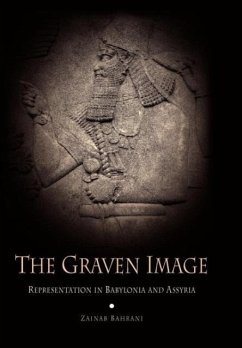The Graven Image Representation in Babylonia and Assyria Zainab Bahrani "A passionate and powerful polemic."--Antiquity "Bahrani opens up the field of discourse for the study of ancient Near Eastern art and brings it into dialogue with current disciplinary trends. . . . The book will stimulate further discussion about the nature(s) of Babylonian and Assyrian representation across the disciplinary divides."--Journal of the American Oriental Society "A welcome addition to the study of the ancient Near East. It breaks away from Eurocentric approaches and tries to do justice to Mesopotamian thought, thus shedding new light on the relationship between text and representation. . . . Bahrani's book will become the center of a lively debate."--Bryn Mawr Classical Review Mesopotamia, the world's earliest literate culture, developed a rich philosophical conception of representation in which the world was saturated with signs. Instead of imitating the natural world, representation--both in writing and in visual images--was thought to participate in the world and to have an effect upon it in natural, magical, and supernatural ways. The Graven Image is the first book to explore this tradition, which developed prior to, and apart from, the Greek understanding of representation. The classical Greek system, based on the notion of mimesis, or copy, is the one with which we are most familiar today. The Assyro-Babylonian ontology presented here by Zainab Bahrani opens up fresh avenues for thinking about the concept of representation in general, and her reading of the ancient Mesopotamian textual and visual record in its own ontological context develops an entirely new approach to understanding Babylonian and Assyrian arts in particular. The Graven Image describes, for the first time, rituals and wars involving images; the relationship of divination, the organic body, and representation; and the use of images as a substitute for the human form, integrating this ancient material into contemporary debates in critical theory. Bahrani challenges current methodologies in the study of Near Eastern archaeology and art history, introducing a new way to appreciate the unique contributions of Assyrian and Babylonian culture and their complex relationships to the past and present. Zainab Bahrani is Edith Porada Associate Professor of Art History and Archaeology at Columbia University. Archaeology, Culture, and Society 2003 256 pages 6 x 9 28 illus. ISBN 978-0-8122-3648-4 Cloth $59.95s £39.00 World Rights Archaeology Short copy: "A welcome addition to the study of the ancient Near East. It breaks away from Eurocentric approaches and tries to do justice to Mesopotamian thought, thus shedding new light on the relationship between text and representation. . . . Bahrani's book will become the center of a lively debate."--Bryn Mawr Classical Review








